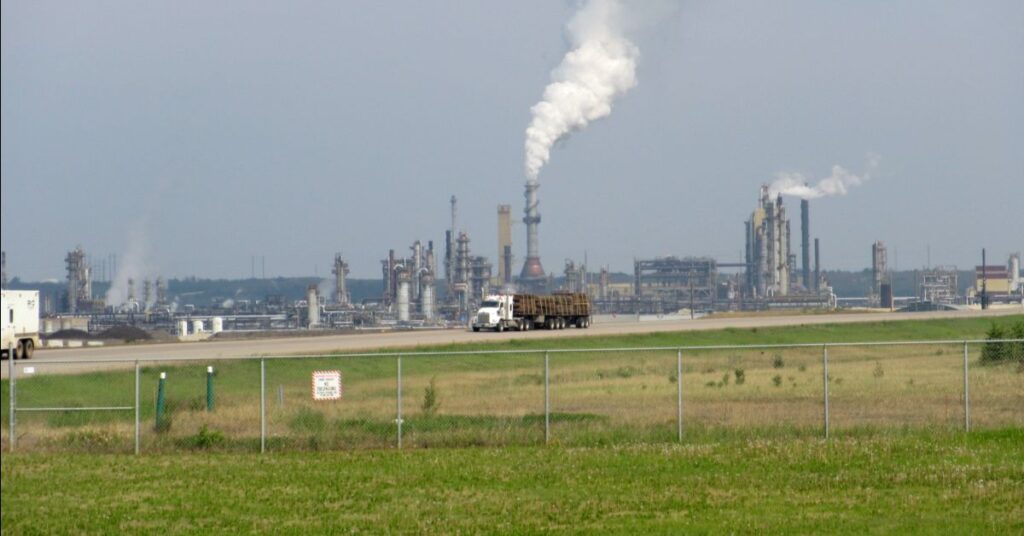We have a week before we have to be back in Edmonton for SweetPea’s date with the surgeon, so we decide to head north and check out the oil industry.
Fort McMurray was originally a Hudson Bay Company fur trading post, but now is the epicentre, for better or worse depending on your point of view, for the oil sands industry in Canada. The majority of the population in Fort McMurray work directly for, or in support of, various oil mining companies. The population of the town varies depending on the price of oil.
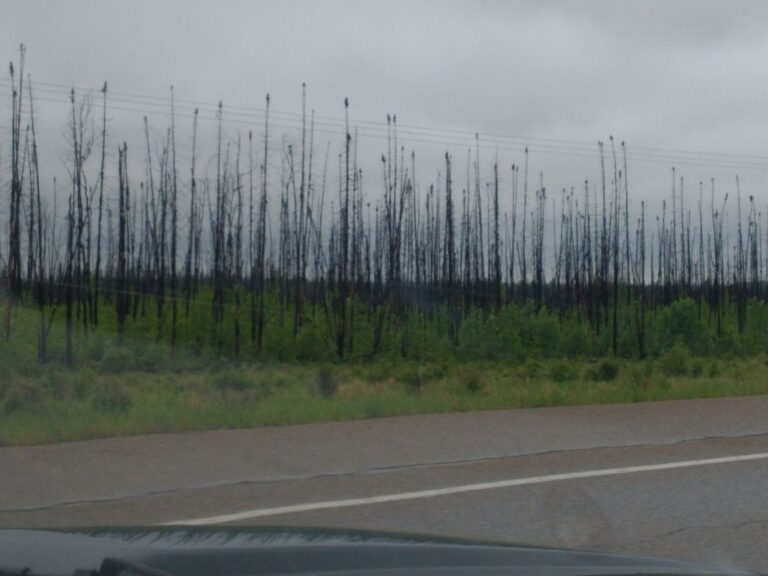
In 2016 a major forest fire swept through the Fort McMurray area, causing the evacuation of the entire town and surrounding area (about 88,000 people).
Evidence of the fire can still be seen along the highway to Fort Mac and in the town itself.
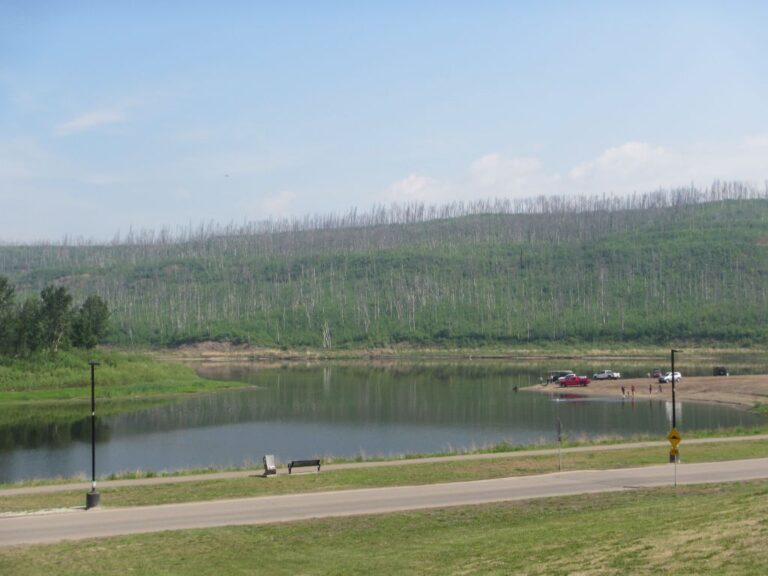
At the nearby campground in Gregoire Lake Provincial Park the damage caused by the fire is readily seen. The fire went through the campground and we have new restroom facilities (nice, except for the $2 for 2 minutes shower).
The mosquitoes and black flies are manageable if you have a screen tent and lots of bug spray!
Fort McMurray is located at 56.73° N 111.38° W. At this latitude daylight starts around 3:30 am and it doesn’t get dark until after 10:30 pm. Good thing Rosita comes with blackout screens, so that the old folks can get to sleep at a reasonable time!
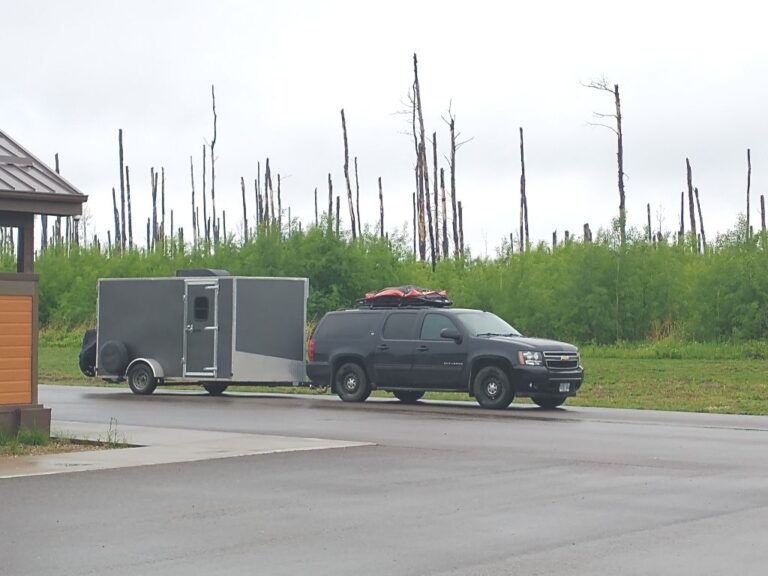
Just outside of town, next to the Syncrude facility, is a small area called “Giants of Mining” where Syncrude has gathered a couple of pieces of equipment that were in use up until 1999.
The Dragline Shovel and Bucketwheel Reclaimer are two massive pieces of equipment that were used to dig the raw oil sand.
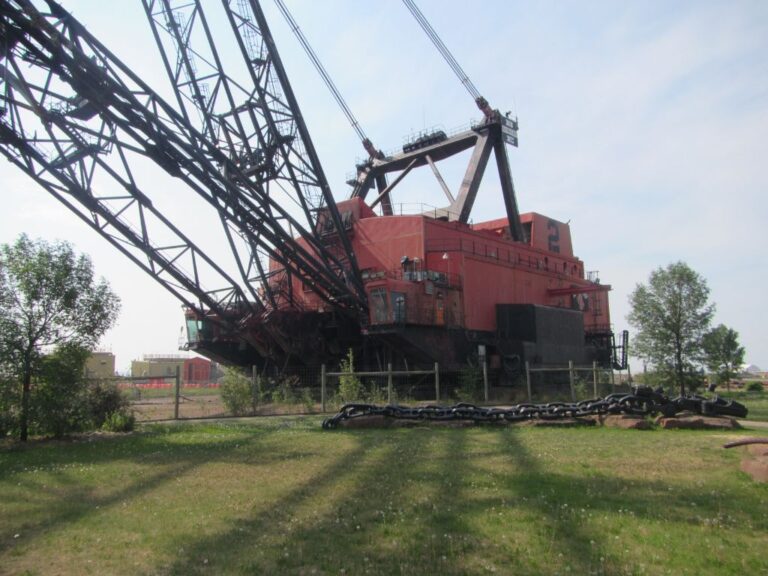
The Dragline pulled a bucket through the ground and piled up the oil sand in long rows. It is hard to get a good idea of the size of the Dragline from the photo, but the photo of the bucket can provide some perspective.
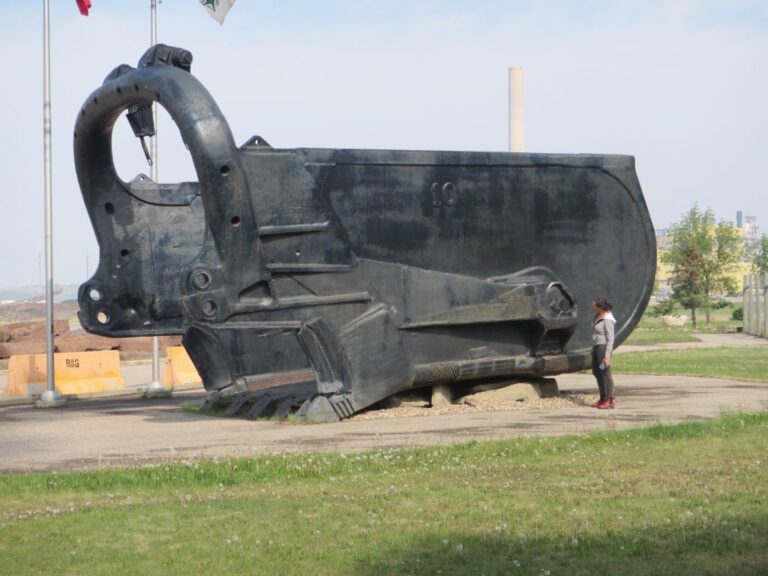
After the oil sand is piled into long windrows a Bucketwheel Reclaimer (odd name I know) is used to dig up the rows and transport, via conveyor belts, the oil sand to a nearby extraction plant.
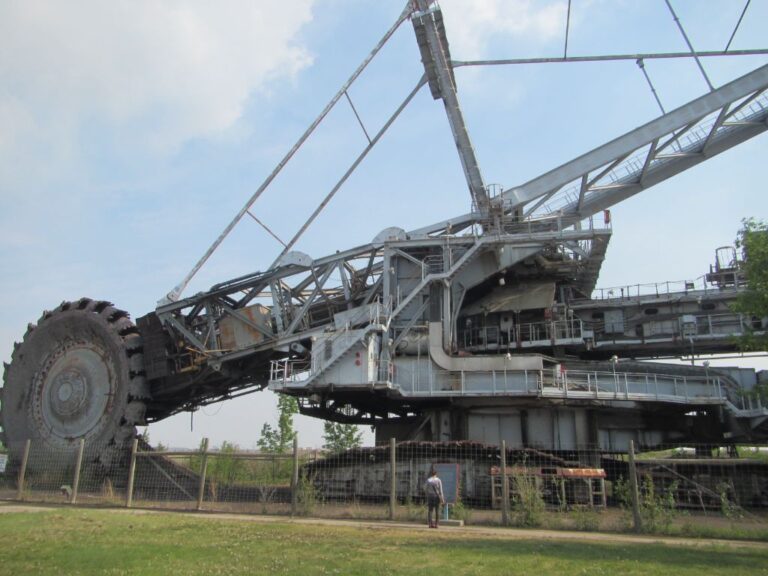
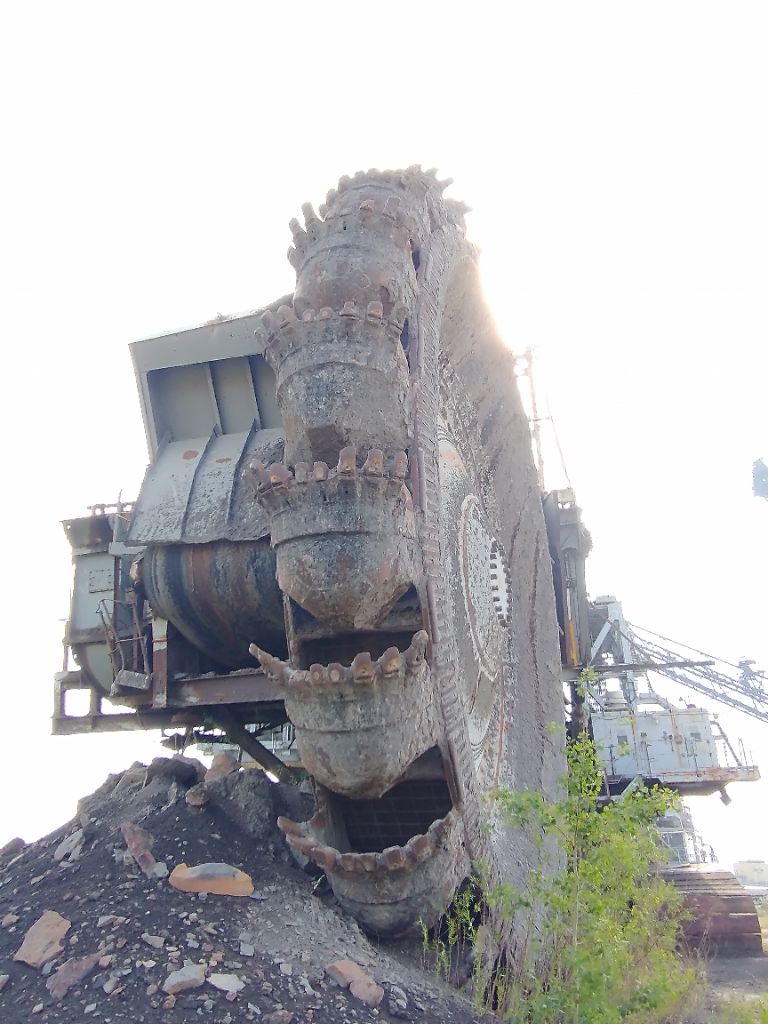
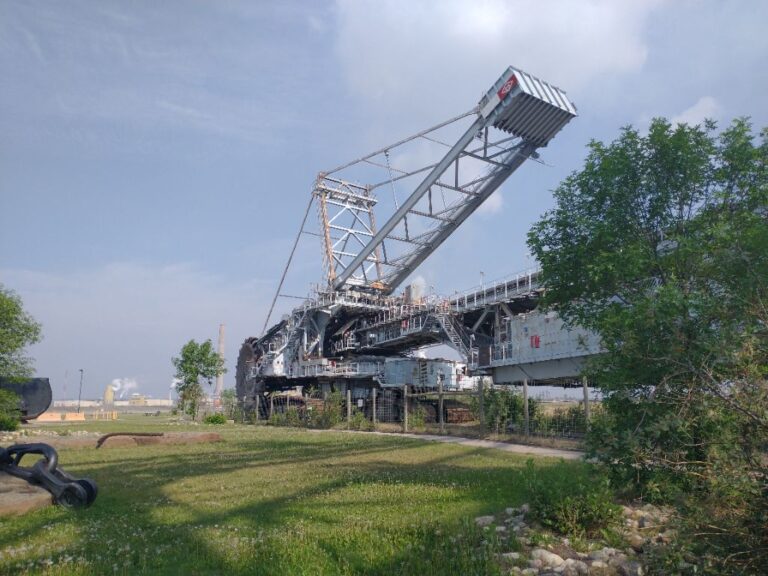
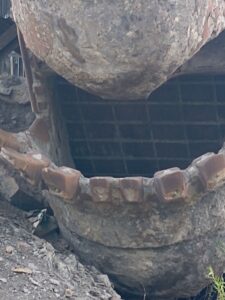
Up close each bucket looks like the mouth of one of the aliens in the Aliens Movie series.
The individual teeth on the buckets wear quickly and must be replaced every few days (yes, days).
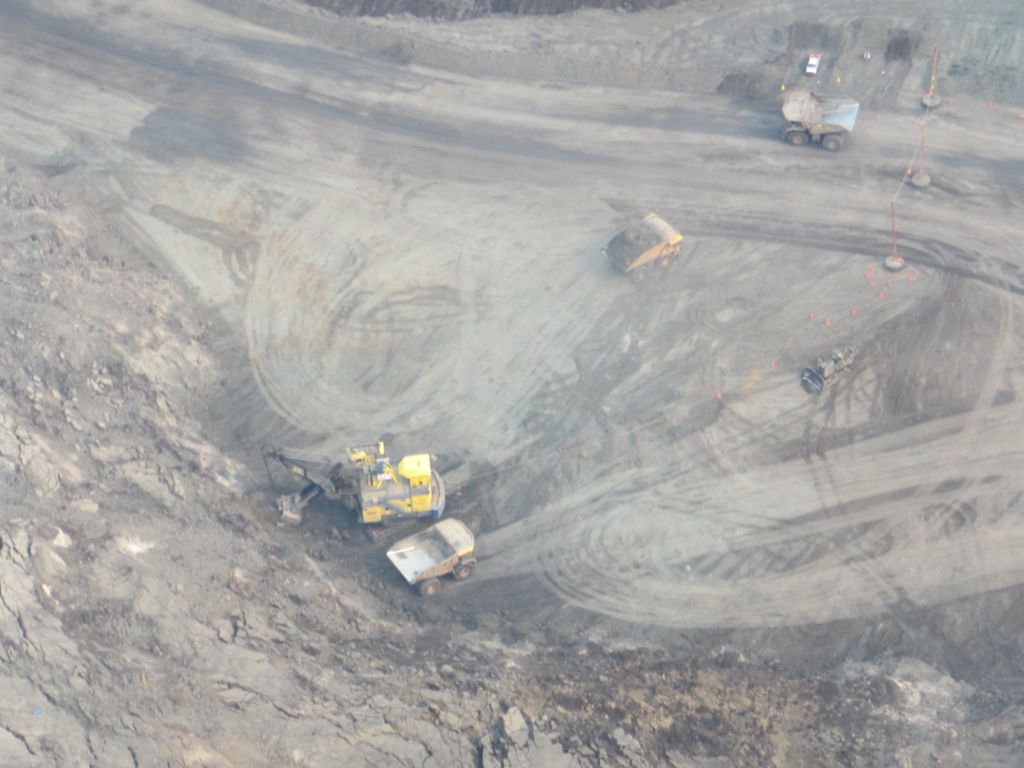
Draglines and Reclaimers have been replaced with excavators and dump trucks. This eliminates the conveyor belt systems and allows the targeted excavation of richer soil areas.
Each dump truck can carry 400 tons of raw material. For perspective, in the top right corner of the photo a dump truck is driving past a regular pick-up truck (the small white blob above the dump truck, a single dump truck tire is wider than the pick-up truck).
In the Oil Sands Discovery Centre their is an older dump truck on display. This truck had a capacity of only 150 tons.
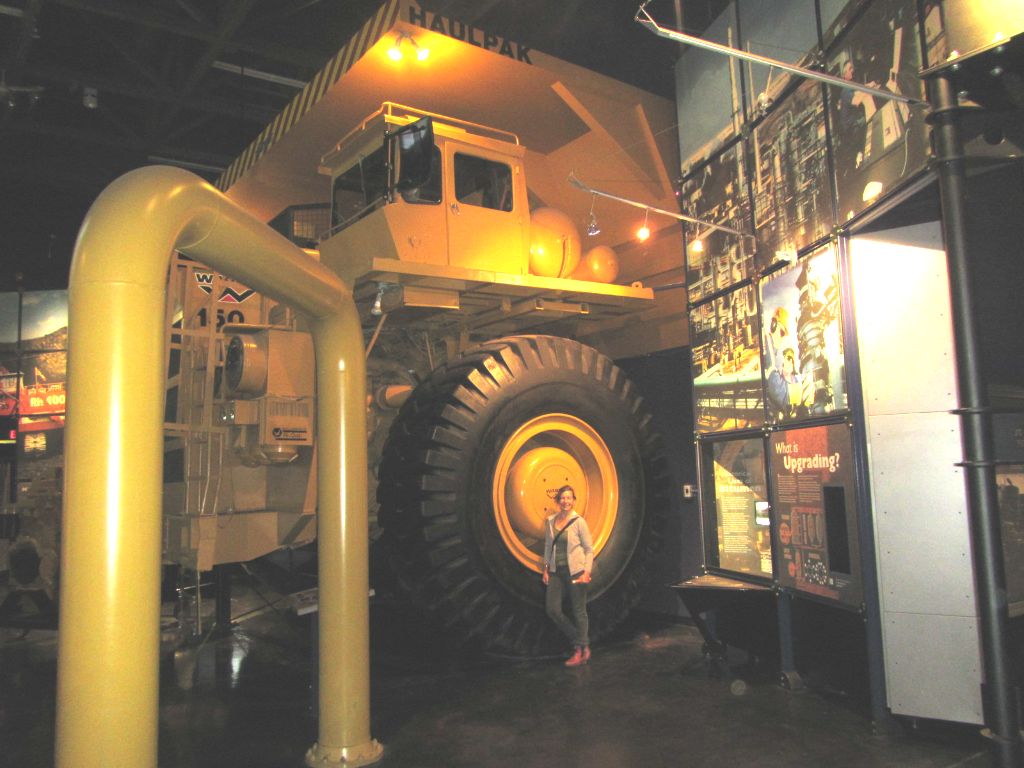
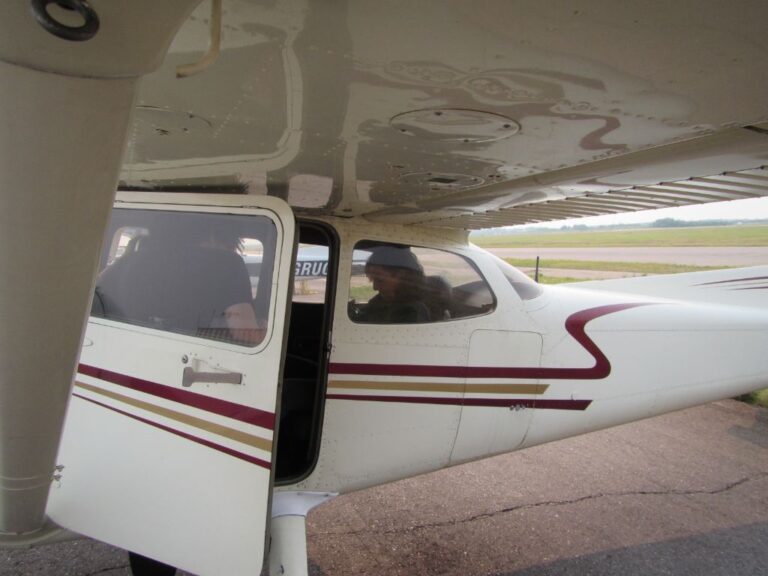
We decided to charter a flight to view the oil sands mining operations from above.
The plane, a Cessna 172, was tiny! The smallest plane I have ever been in.
It’s a good thing our pilot was 18 years old and weighed less than 100 lbs (ok, maybe in his 20’s).
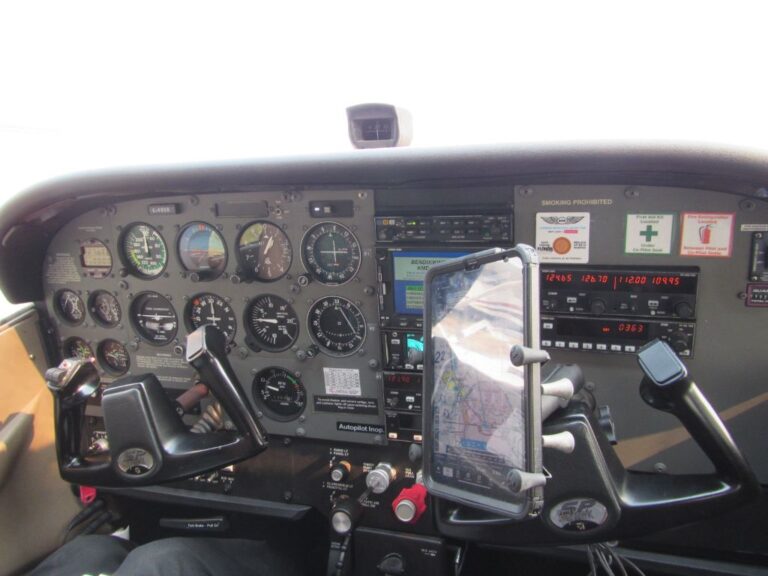
I had to fold myself into the seat next to the pilot, and I wasn’t sure how I was going to get out. Oh well, a problem for later.
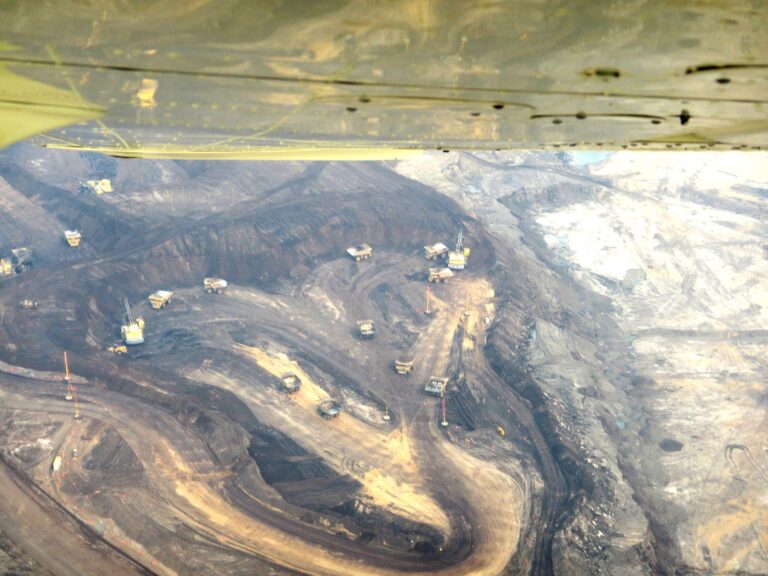
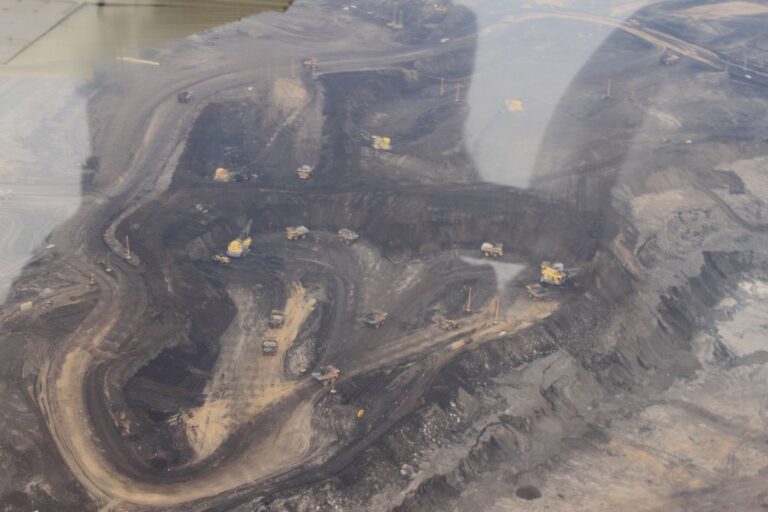
We were amazed at the number of shovels and dump trucks in operation. The pilot told us that some of the dump trucks don’t have a driver, they are fully automated!
The shovels and dump trucks work 24/7.
One of the by-products of the upgrading process is sulphur. The yellow pyramid shaped structures in the photo are HUGE piles of sulphur. Again, hard to get a sense of size from the photo, but if you look at the lower left corner of the photo you will see a black dot. This dot is a full-size excavator.
The pilot told us that the cosmetic industry is now purchasing sulphur for use in beauty products. There is enough sulphur down there too make everyone in the world look like a movie star!
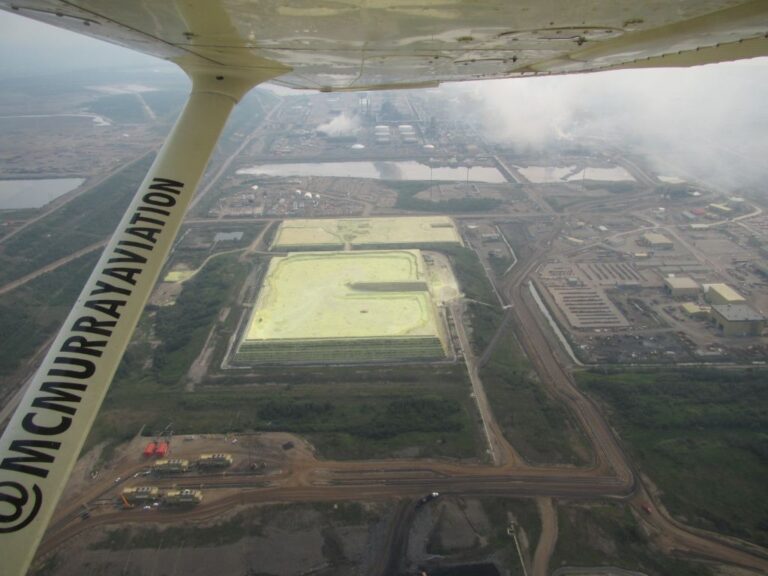
Trip Summary:
Depart: Elk Island National Park (Astotin Lake Campground), Alberta 10:45 am May 31; Odometer: 227010 km
Arrive: Gregoire Lake Provincial Park, Alberta 3:45 pm May 31; Odometer: 227393 km
Gas Summary:
Grassland, AB (May 31): 42.9 l @ $1.35/l (CAD$57.84) – ODO 227149
Fort McMurray, AB (June 1): 66.7 l @ $1.45/l (CAD$96.74) – ODO 227424

